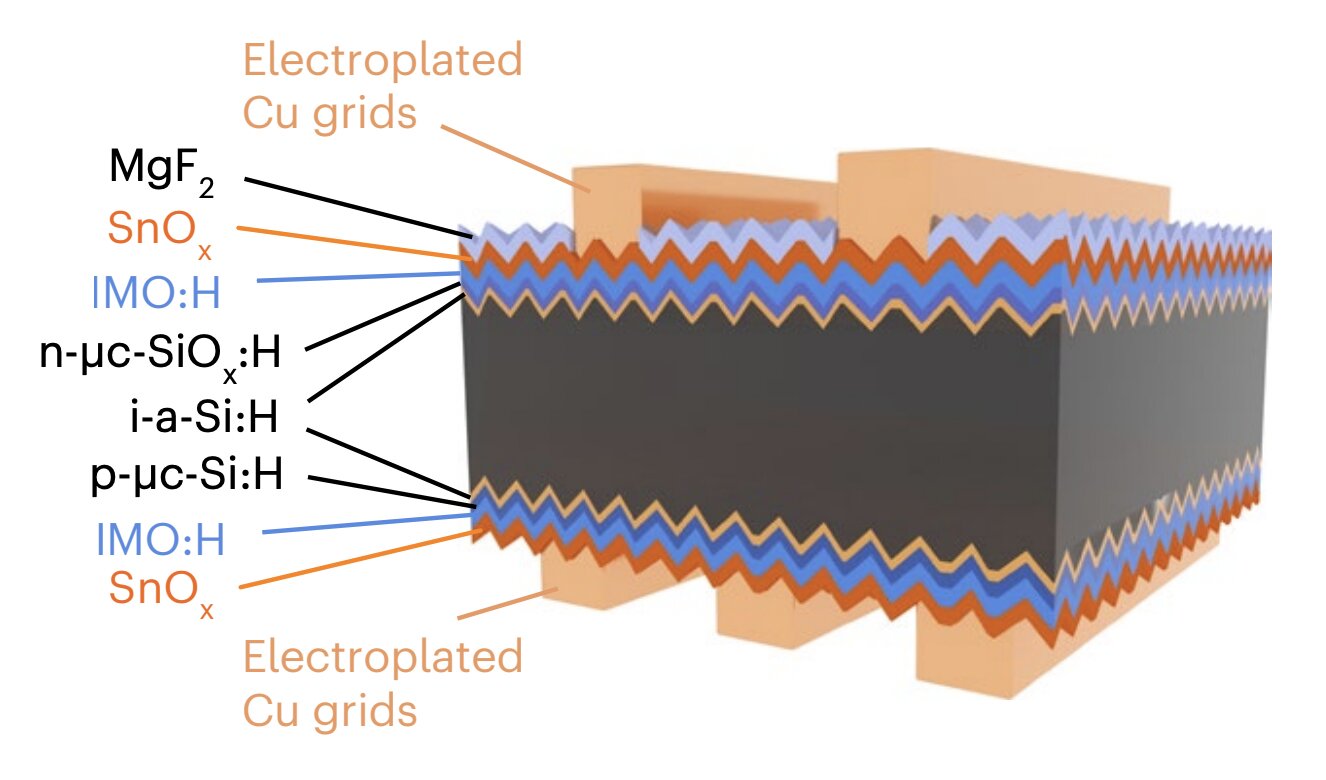 Silicon heterojunction (SHJ), solar cells based on a heterojunction between semiconductors with different band gaps, are among the most promising photovoltaic technologies. So far, these cells have exhibited remarkable power conversion efficiencies and good operational stabilities.
Silicon heterojunction (SHJ), solar cells based on a heterojunction between semiconductors with different band gaps, are among the most promising photovoltaic technologies. So far, these cells have exhibited remarkable power conversion efficiencies and good operational stabilities.Despite their great potential and notable advantages, SHJ solar cells are typically based on rare and expensive materials, which limits their widespread deployment. In addition, their fabrication is often incompatible with existing manufacturing processes, further complicating their large-scale production.
A team of researchers at Suzhou Maxwell Technologies Co., Nankai University and other institutes in China recently introduced a new design and fabrication strategy that could reduce the costs of SHJ solar technology, without drastically reducing their efficiency. In a paper published in Nature Energy, the team presented highly promising results achieved by solar cells that were produced using their proposed strategy.
"The limited supply of rare indium and the high cost of silver paste are among the most important problems that SHJ solar cells will face," Cao Yu, Qiaojiao Zou and their colleagues wrote in their paper. "To overcome the obstacle of indium-based transparent electrodes for efficient SHJ solar cells, we successfully prepared cheap and mass-producible undoped tin oxide (SnOx) electrode materials by sputtering at room temperature."
Yu, Zhou and his colleagues were able to fabricate new transparent electrodes (i.e., essential components of SHJ solar cells) based on undoped SnOx, using a highly scalable deposition technique that is compatible with existing production processes. In initial tests, these materials were found to exhibit highly advantageous properties, which translated in an excellent performance of the team's solar cells.
"Taking advantage of its natural oxygen vacancy defect, the carrier mobility and resistivity of prepared materials reached 22 cm2 V−1 s−1 and 2.38 × 10−3 Ω cm, respectively," Yu, Zou and their colleagues wrote in their paper.
"The SHJ solar cell with an undoped SnOx front transparent electrode demonstrated an efficiency of 24.91%. Furthermore, SnOx films have excellent chemical stability and can withstand corrosion by acid and alkali solutions during electroplating processes. Finally, SHJ solar cells with plating copper electrode and double-sided indium-based transparent electrodes halved were prepared, and a certified efficiency of 25.94% (total area of 274.4 cm2) was achieved."
The recent work by this team of researchers highlights the promise of using undoped SnOx, as an alternative to indium and silver to create transparent electrodes for SHJ solar cells. Their proposed design strategy appears to retain the efficiency of solar cells, while greatly reducing the costs and efforts required to fabricate them.
The researchers' recent findings could soon inspire other studies exploring the potential of the transparent electrodes they created or of electrodes based on other similar materials. Collectively, these efforts could facilitate the large-scale production and commercialization of SHJ photovoltaics, which have so far remained promising but difficult to upscale.







